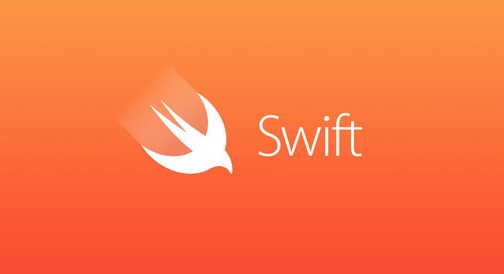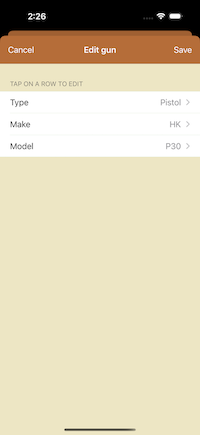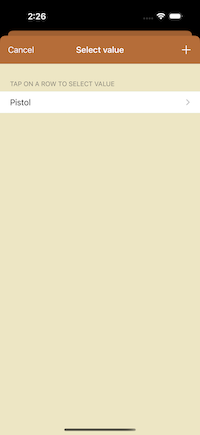
Taming a Herd of View Controllers: Refactoring for Simplicity in Core Data with Swift
If you’ve worked on an iOS app of any significant size, you’ve likely encountered it: the copy-paste monster. It starts innocently. You build a view controller, get it working perfectly, and then you need another one that’s almost the same. You duplicate the file, change a few lines, and move on. But then you need another, and another. Before you know it, you’re the reluctant owner of a herd of nearly identical view controllers, and any change to one means a tedious and error-prone update to all the others. To be fair - there is the Rule of three (three strikes and you refactor), so some temporary duplication is very much okay as long as it is addressed in a timely manner.
Data model
Before diving into the details, it is worth talking about the data I am dealing with. This is an abbreviated entity diagram that shows some of it. Each Gun instance is a parent and it has multiple child attributes: Make, Caliber, Action, Finish, Type, etc. Obviusly a Gun can only have one Type but a Type can be associated with multiple Gun objects. The attributes themselves have just one user-entered property: Name.
erDiagram
Gun {
NSDate manufactureDate
String model
String note
String serialNumber
}
GunMake {
String name
}
GunCaliber {
String name
}
GunAction {
String name
}
GunFinish {
String name
}
GunType {
String name
}
Gun }o--|| GunMake : "make"
Gun }o--|| GunCaliber : "caliber"
Gun }o--|| GunAction : "action"
Gun }o--|| GunFinish : "finish"
Gun }o--|| GunType : "type"
I am very well aware that there are better ways to organize parent-child attributes but given the current context and in the spirit of KISS - this entity structure is sufficient and if need be - it can be migrated later to something better.
Workflow
For the Gun-upserting workflow I started with a very basic approach. I settled on using a table view with all the Gun attributes shown in individual cells. Once a cell is selected eg. Type - another view would present itself with a Type list to pick from and a button to add a new one needed. The new Type entry screen is even simpler - just a single textbox to collect name of the Type attribute.



Implementation
Although this is absolutely not a streamlined way of doing data entry - it has the benefit of being quick and easy to develop. A GunUpsertController, a GunTypeEditController, a DBStringEditController (not shown) along with some Core Data child branching logic to support cancellation was all that was needed.
Note: this is partial implementation for brevity.
class GunUpsertController: UITableViewController {
var gun: Gun!
var managedObjectContext: NSManagedObjectContext!
override func tableView(_ tableView: UITableView, cellForRowAt indexPath: IndexPath) -> UITableViewCell {
let result: UITableViewCell = UITableViewCell(style: .value1, reuseIdentifier: "gunType")
result.accessoryType = .disclosureIndicator
if indexPath.section == 0 {
if indexPath.row == 0 { // Type
result.textLabel?.text = Strings.LABEL_GUN_TYPE
result.detailTextLabel?.text = gun.type?.name
}
}
return result
}
override func tableView(_ tableView: UITableView, didSelectRowAt indexPath: IndexPath) {
if indexPath.section == 0 {
if indexPath.row == 0 { // Type
let controller = DBGunTypeEditController(gun: gun)
controller.editPropertyControllerDelegate = self
let navigationController = UINavigationController(rootViewController: controller)
present(navigationController, animated: true, completion: nil)
}
}
}
}
class DBGunTypeEditController: UITableViewController {
var gun: Gun!
var managedObjectContext: NSManagedObjectContext!
var editPropertyControllerDelegate: DBEditPropertyControllerDelegate?
var validationHelper: ValidationHelper!
lazy var fetchedResultsControler: NSFetchedResultsController<GunType> = {
[unowned self] in
let sortDescriptor = NSSortDescriptor(key: "name", ascending: true)
let fReq: NSFetchRequest = GunType.fetchRequest()
fReq.sortDescriptors = [sortDescriptor]
let frc = NSFetchedResultsController(fetchRequest: fReq, managedObjectContext: self.managedObjectContext, sectionNameKeyPath: nil, cacheName: nil)
return frc
}()
convenience init(gun: Gun) {
self.init(style: UITableViewStyle.grouped)
self.managedObjectContext = gun.managedObjectContext
self.gun = gun
self.validationHelper = ValidationHelper.sharedInstance
}
override func viewDidLoad() {
super.viewDidLoad()
self.tableView.register(UITableViewCell.self, forCellReuseIdentifier: "cell")
let cancelButton = UIBarButtonItem(barButtonSystemItem: .cancel, target: self, action: #selector(cancelButtonTapped(sender:)))
navigationItem.leftBarButtonItem = cancelButton
let addBarButton = UIBarButtonItem(barButtonSystemItem: .add, target: self, action: #selector(addButtonTapped(sender:)))
navigationItem.rightBarButtonItem = addBarButton
navigationItem.title = Strings.TITLE_SELECT_GUN_TYPE
fetchedResultsControler.delegate = self
do {
try fetchedResultsControler.performFetch()
} catch {
fatalError("Error fetching guns: \(error)")
}
}
override func tableView(_ tableView: UITableView, numberOfRowsInSection section: Int) -> Int {
return fetchedResultsControler.sections![section].numberOfObjects
}
override func tableView(_ tableView: UITableView, cellForRowAt indexPath: IndexPath) -> UITableViewCell {
guard let result = tableView.dequeueReusableCell(withIdentifier: "cell") else {
return UITableViewCell()
}
let entity = fetchedResultsControler.object(at: indexPath)
result.accessoryType = .disclosureIndicator
result.textLabel?.text = entity.name
return result
}
override func tableView(_ tableView: UITableView, titleForHeaderInSection section: Int) -> String? {
if let fetchedObjects = fetchedResultsControler.fetchedObjects {
if section == 0 && fetchedObjects.count > 0 {
return Strings.MESSAGE_EDIT_GUN_TYPE_INSTRUCTIONS
}
}
return nil
}
override func tableView(_ tableView: UITableView, didSelectRowAt indexPath: IndexPath) {
let selectedEntity = fetchedResultsControler.object(at: indexPath)
gun.type = selectedEntity
selectedEntity.addToGuns(gun)
editPropertyControllerDelegate?.controllerDidFinish(self)
}
@objc func addButtonTapped(sender: UIBarButtonItem) {
let childContext = NSManagedObjectContext(concurrencyType: .mainQueueConcurrencyType)
childContext.parent = managedObjectContext
let childEntity = GunType(context: childContext)
let controller: DBStringEditController = DBStringEditController(managedObject: childEntity, forKey: "name")
controller.delegate = self
controller.navigationItem.title = Strings.TITLE_NEW_GUN_TYPE
controller.textField.placeholder = Strings.LABEL_NAME
let navigationController: UINavigationController = UINavigationController(rootViewController: controller)
present(navigationController, animated: true, completion: nil)
}
@objc func cancelButtonTapped(sender: UIBarButtonItem) {
editPropertyControllerDelegate?.contorllerDidCancel(self)
}
}
Problem
Obviously a gun has more than one attribute so I quickly replicated the code to add support for Action and Caliber. Unfortunately, I still had to account for Make and Type and I also wanted to add another module later for maintaining an Ammo inventory that would follow the same workflow so it was time to honor the Rule of three and refactor before things get out of control.
Solution
The solution was to apply the Don’t Repeat Yourself (DRY) principle by abstracting the common code into basic reusable classes.
The core logic in each replicated controller was responsible for:
- Setting up a
UITableView. - Configuring an
NSFetchedResultsControllerto fetch and display a lookup dataset from Core Data. - Handling table view updates via the
NSFetchedResultsControllerDelegate. - Implementing
DZNEmptyDataSetSourceandDZNEmptyDataSetDelegateto show a user-friendly message when the table was empty. - Adding a “plus” button to the navigation bar to create a new entry.
- Implementing the swipe-to-delete functionality.
I decided to create a generic DBEntityPropertyEditController.
class DBEntityPropertyEditController<T: NSManagedObject>: UITableViewController, NSFetchedResultsControllerDelegate, DZNEmptyDataSetSource, DZNEmptyDataSetDelegate, DBEditPropertyControllerDelegate {
var parentObject: NSManagedObject!
var managedObjectContext: NSManagedObjectContext!
var editPropertyControllerDelegate: DBEditPropertyControllerDelegate?
var validationHelper: ValidationHelper!
var propertyEntityName: String!
var navigationItemTitle: String!
var addNewTitle: String!
var instructionsText: String!
var parentRelationshipKeyPath: String!
var propertyInverseRelationshipKeyPath: String!
lazy var fetchedResultsControler: NSFetchedResultsController<T> = {
[unowned self] in
let sortDescriptor = NSSortDescriptor(key: "name", ascending: true)
let fReq: NSFetchRequest<T> = NSFetchRequest<T>(entityName: self.propertyEntityName)
fReq.sortDescriptors = [sortDescriptor]
let frc = NSFetchedResultsController(fetchRequest: fReq, managedObjectContext: self.managedObjectContext, sectionNameKeyPath: nil, cacheName: nil)
return frc
}()
convenience init(
parentObject: NSManagedObject,
propertyEntityName: String,
navigationItemTitle: String,
addNewTitle: String,
instructionsText: String,
parentRelationshipKeyPath: String,
propertyInverseRelationshipKeyPath: String
) {
self.init(style: UITableView.Style.grouped)
self.managedObjectContext = parentObject.managedObjectContext
self.parentObject = parentObject
self.validationHelper = ValidationHelper.sharedInstance
self.propertyEntityName = propertyEntityName
self.navigationItemTitle = navigationItemTitle
self.addNewTitle = addNewTitle
self.instructionsText = instructionsText
self.parentRelationshipKeyPath = parentRelationshipKeyPath
self.propertyInverseRelationshipKeyPath = propertyInverseRelationshipKeyPath
}
override func viewDidLoad() {
super.viewDidLoad()
self.tableView.register(UITableViewCell.self, forCellReuseIdentifier: "cell")
self.tableView.emptyDataSetSource = self
self.tableView.emptyDataSetDelegate = self
let cancelButton = UIBarButtonItem(barButtonSystemItem: .cancel, target: self, action: #selector(cancelButtonTapped(sender:)))
navigationItem.leftBarButtonItem = cancelButton
let addBarButton = UIBarButtonItem(barButtonSystemItem: .add, target: self, action: #selector(addButtonTapped(sender:)))
navigationItem.rightBarButtonItem = addBarButton
navigationItem.title = navigationItemTitle
fetchedResultsControler.delegate = self
do {
try fetchedResultsControler.performFetch()
} catch {
fatalError("Error fetching: \(error)")
}
}
// MARK: - UITableViewDataSource
override func tableView(_ tableView: UITableView, numberOfRowsInSection section: Int) -> Int {
guard let sectionInfo = fetchedResultsControler.sections?[section] else { fatalError("failed to resolve FRC") }
return sectionInfo.numberOfObjects
}
override func tableView(_ tableView: UITableView, cellForRowAt indexPath: IndexPath) -> UITableViewCell {
guard let result = tableView.dequeueReusableCell(withIdentifier: "cell") else {
return UITableViewCell()
}
let entity = fetchedResultsControler.object(at: indexPath)
result.accessoryType = .disclosureIndicator
result.textLabel?.text = entity.value(forKey: "name") as? String
return result
}
override func tableView(_ tableView: UITableView, titleForHeaderInSection section: Int) -> String? {
if let fetchedObjects = fetchedResultsControler.fetchedObjects {
if section == 0 && fetchedObjects.count > 0 {
return instructionsText
}
}
return nil
}
// MARK: - UITableViewDelegate
override func tableView(_ tableView: UITableView, didSelectRowAt indexPath: IndexPath) {
let selectedEntity = fetchedResultsControler.object(at: indexPath)
parentObject.setValue(selectedEntity, forKey: parentRelationshipKeyPath)
let mutableGuns = selectedEntity.mutableSetValue(forKey: propertyInverseRelationshipKeyPath)
mutableGuns.add(parentObject)
AppDelegate().saveContext()
editPropertyControllerDelegate?.controllerDidFinish(self)
}
@objc func addButtonTapped(sender: UIBarButtonItem) {
let childContext = NSManagedObjectContext(concurrencyType: .mainQueueConcurrencyType)
childContext.parent = managedObjectContext
let childEntity = NSEntityDescription.insertNewObject(forEntityName: propertyEntityName, into: childContext)
let controller = DBStringEditController(managedObject: childEntity, forKey: "name")
controller.delegate = self
controller.navigationItem.title = addNewTitle
controller.textField.placeholder = Strings.LABEL_NAME
let navigationController = UINavigationController(rootViewController: controller)
present(navigationController, animated: true, completion: nil)
}
@objc func cancelButtonTapped(sender: UIBarButtonItem) {
editPropertyControllerDelegate?.contorllerDidCancel(self)
}
// MARK: - DZNEmptyDataSetSource
func title(forEmptyDataSet scrollView: UIScrollView!) -> NSAttributedString! {
let title = Strings.MESSAGE_NO_ITEMS_PRESENT
let attributes = [NSAttributedString.Key.font: UIFont.preferredFont(forTextStyle: .headline)]
return NSAttributedString(string: title, attributes: attributes)
}
func description(forEmptyDataSet scrollView: UIScrollView!) -> NSAttributedString! {
let title = Strings.MESSAGE_NO_ITEMS_PRESENT
let attributes = [NSAttributedString.Key.font: UIFont.preferredFont(forTextStyle: .body)]
return NSAttributedString(string: title, attributes: attributes)
}
// MARK: - DZNEmptyDataSetDelegate
func emptyDataSetShouldDisplay(_ scrollView: UIScrollView!) -> Bool {
return true
}
// MARK: - NSFetchedResultsControllerDelegate
func controllerWillChangeContent(_ controller: NSFetchedResultsController<NSFetchRequestResult>) {
tableView.beginUpdates()
}
func controller(_ controller: NSFetchedResultsController<NSFetchRequestResult>, didChange anObject: Any, at indexPath: IndexPath?, for type: NSFetchedResultsChangeType, newIndexPath: IndexPath?) {
switch type {
case .insert:
tableView.insertRows(at: [newIndexPath!], with: .fade)
case .delete:
tableView.deleteRows(at: [indexPath!], with: .fade)
case .update:
tableView.reloadRows(at: [indexPath!], with: .fade)
case .move:
tableView.moveRow(at: indexPath!, to: newIndexPath!)
@unknown default:
fatalError()
}
}
func controllerDidChangeContent(_ controller: NSFetchedResultsController<NSFetchRequestResult>) {
tableView.endUpdates()
}
// MARK: - DBEditPropertyControllerDelegate
func controllerDidFinish(_ controller: UIViewController) {
if let context: NSManagedObjectContext = (controller as! DBStringEditController).managedObjectContext, context.hasChanges {
do {
try context.save()
dismiss(animated: true, completion: nil)
} catch {
let nserror = error as NSError
validationHelper.showCoreDataValidationErrors(error: nserror, controller: controller)
}
}
}
func contorllerDidCancel(_ controller: UIViewController) {
controller.dismiss(animated: true)
}
}
Benefits
- I went from multiple copies of almost the same code to only one class.
- I deleted numerous unit tests that were no longer needed.
- I left the door open for further subclassing and customization while still maintaining a very tight codebase. In example - I could derive a separate controller that deals only with
Gunattributes or one only withAmmoattributes.
class GunPropertyEditController<T: NSManagedObject>: DBEntityPropertyEditController<T> {
convenience init(
gun: Gun,
entityName: String,
navigationItemTitle: String,
addNewTitle: String,
instructionsText: String,
gunRelationshipKeyPath: String
) {
self.init(
parentObject: gun,
propertyEntityName: entityName,
navigationItemTitle: navigationItemTitle,
addNewTitle: addNewTitle,
instructionsText: instructionsText,
parentRelationshipKeyPath: gunRelationshipKeyPath,
propertyInverseRelationshipKeyPath: "guns"
)
}
}
I could also go a step further and subclass one more time per attribute in case I wanted to do something different.
class GunTypeEditController: GunPropertyEditController<GunType> {
convenience init(gun: Gun) {
self.init(
gun: gun,
entityName: "GunType",
navigationItemTitle: Strings.TITLE_SELECT_GUN_TYPE,
addNewTitle: Strings.TITLE_NEW_GUN_TYPE,
instructionsText: Strings.MESSAGE_EDIT_GUN_TYPE_INSTRUCTIONS,
gunRelationshipKeyPath: "type"
)
}
}
Whatever the reason might be, this new base DBEntityPropertyEditController would handle all the boilerplate work, leaving the subclasses with the minimal task of providing their specific configurations.
Conclusion
Taking the time to refactor duplicated code is always a worthwhile investment. It pays dividends in reduced complexity, improved stability, and faster development down the road. So next time you find yourself reaching for copy-paste, take a moment to consider if a base class or another form of abstraction could save you from a future maintenance nightmare. Your future self will thank you.